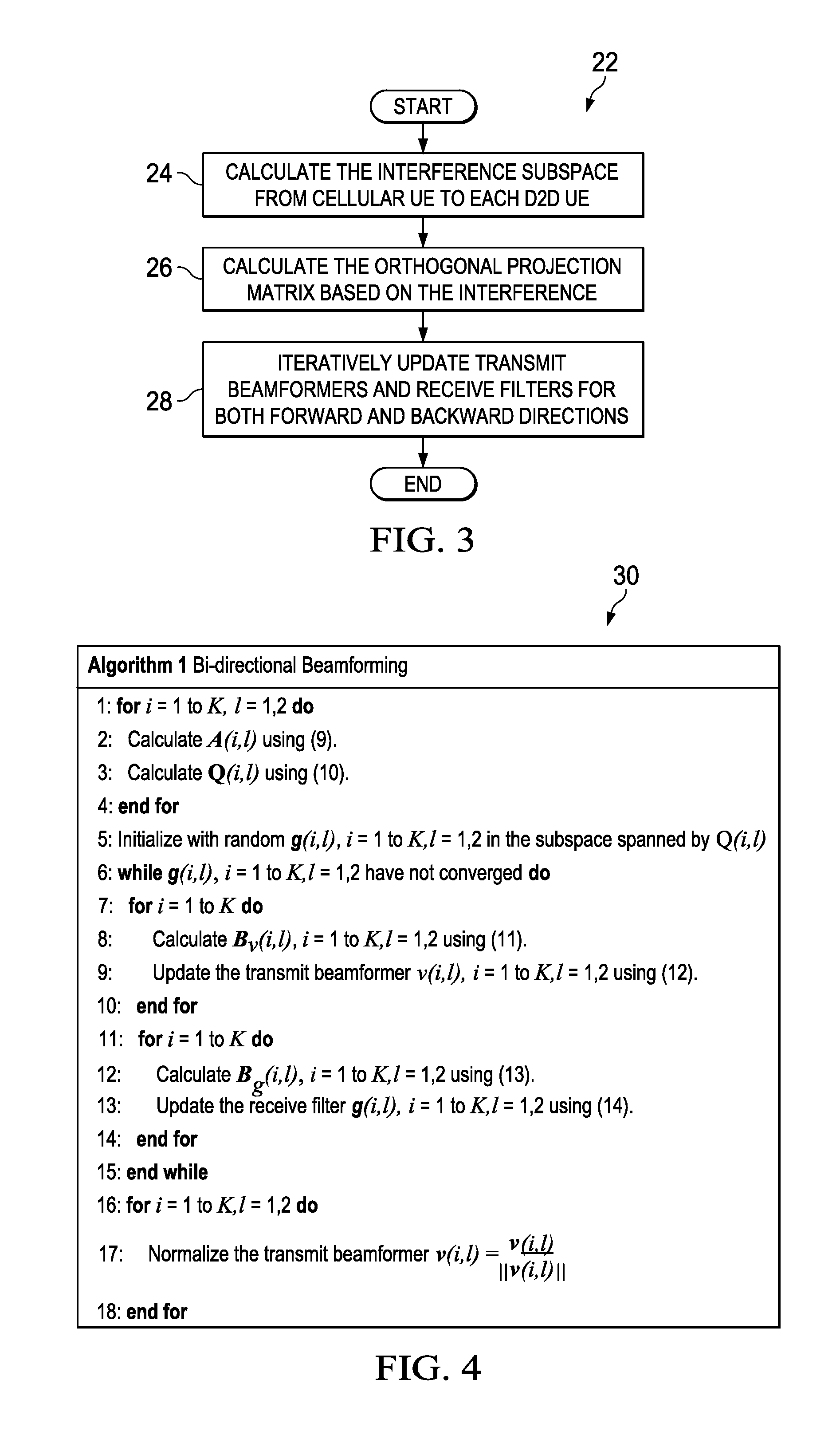Bi-Directional Training in Dual Networks System
a dual network and training technology, applied in diversity/multi-antenna systems, site diversity, wireless communication, etc., can solve the problems of d2d ues and cellular ues that may interfere with each other, and cannot be desired
- Summary
- Abstract
- Description
- Claims
- Application Information
AI Technical Summary
Benefits of technology
Problems solved by technology
Method used
Image
Examples
Embodiment Construction
[0020]The making and using of the present embodiments are discussed in detail below. It should be appreciated, however, that the present disclosure provides many applicable inventive concepts that may be embodied in a wide variety of specific contexts. The specific embodiments discussed are merely illustrative and do not limit the scope of the disclosure.
[0021]The present inventive concept is described herein with respect to example embodiments in a specific context, namely a hybrid D2D-cellular network 10 as illustrated in FIG. 1. The inventive concept may also be applied, however, to other networks that support multi-user communications such as a Long Term Evolution (LTE) network. As will be more fully explained below, the present disclosure addresses issues with interference management and resource allocation in, for example, a network like the hybrid D2D-celluarl network 10.
[0022]In other words, the degrees of freedoms (DoFs) within the D2D subsystem are improved by achieving in...
PUM
 Login to View More
Login to View More Abstract
Description
Claims
Application Information
 Login to View More
Login to View More - R&D
- Intellectual Property
- Life Sciences
- Materials
- Tech Scout
- Unparalleled Data Quality
- Higher Quality Content
- 60% Fewer Hallucinations
Browse by: Latest US Patents, China's latest patents, Technical Efficacy Thesaurus, Application Domain, Technology Topic, Popular Technical Reports.
© 2025 PatSnap. All rights reserved.Legal|Privacy policy|Modern Slavery Act Transparency Statement|Sitemap|About US| Contact US: help@patsnap.com



